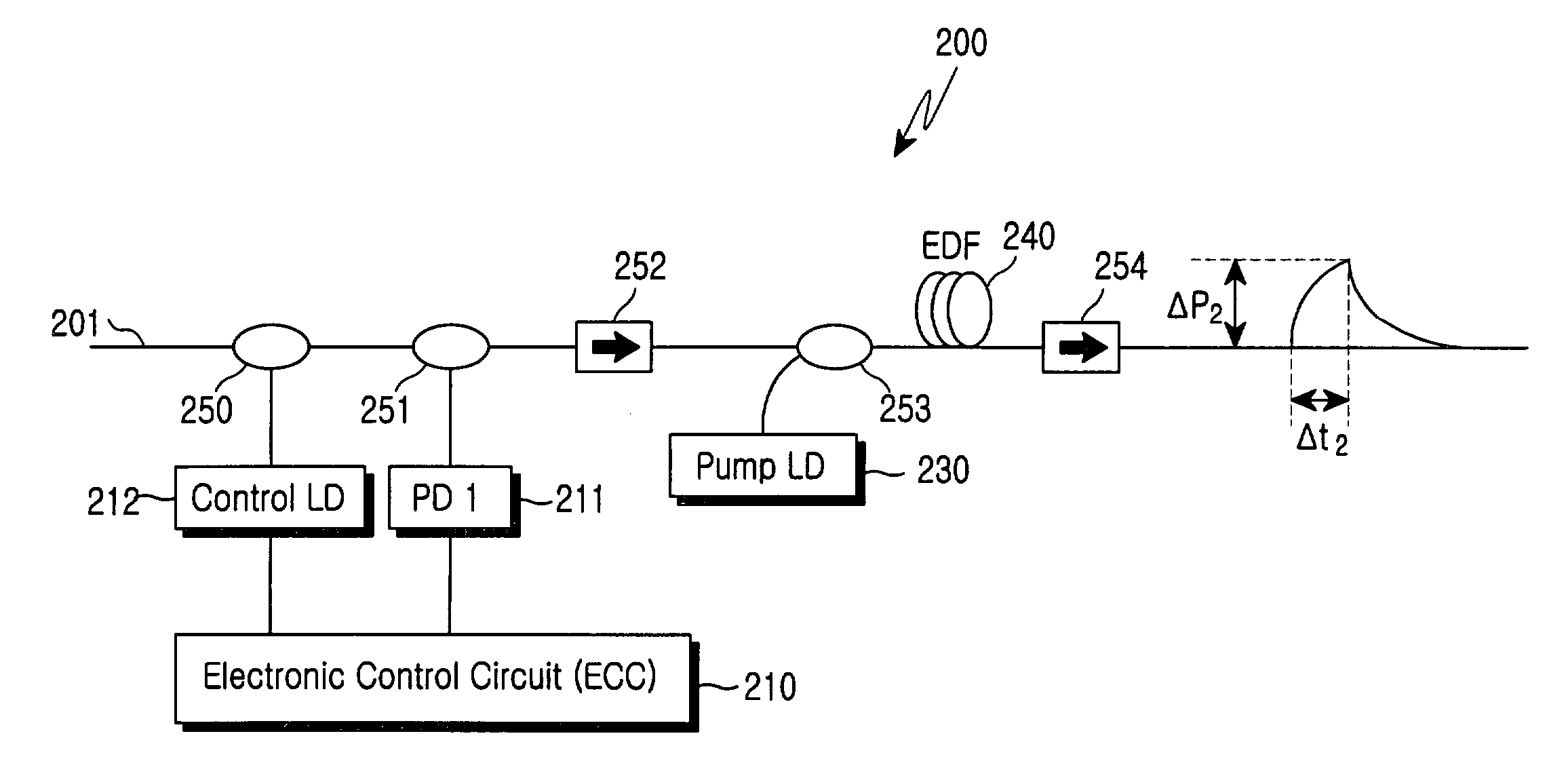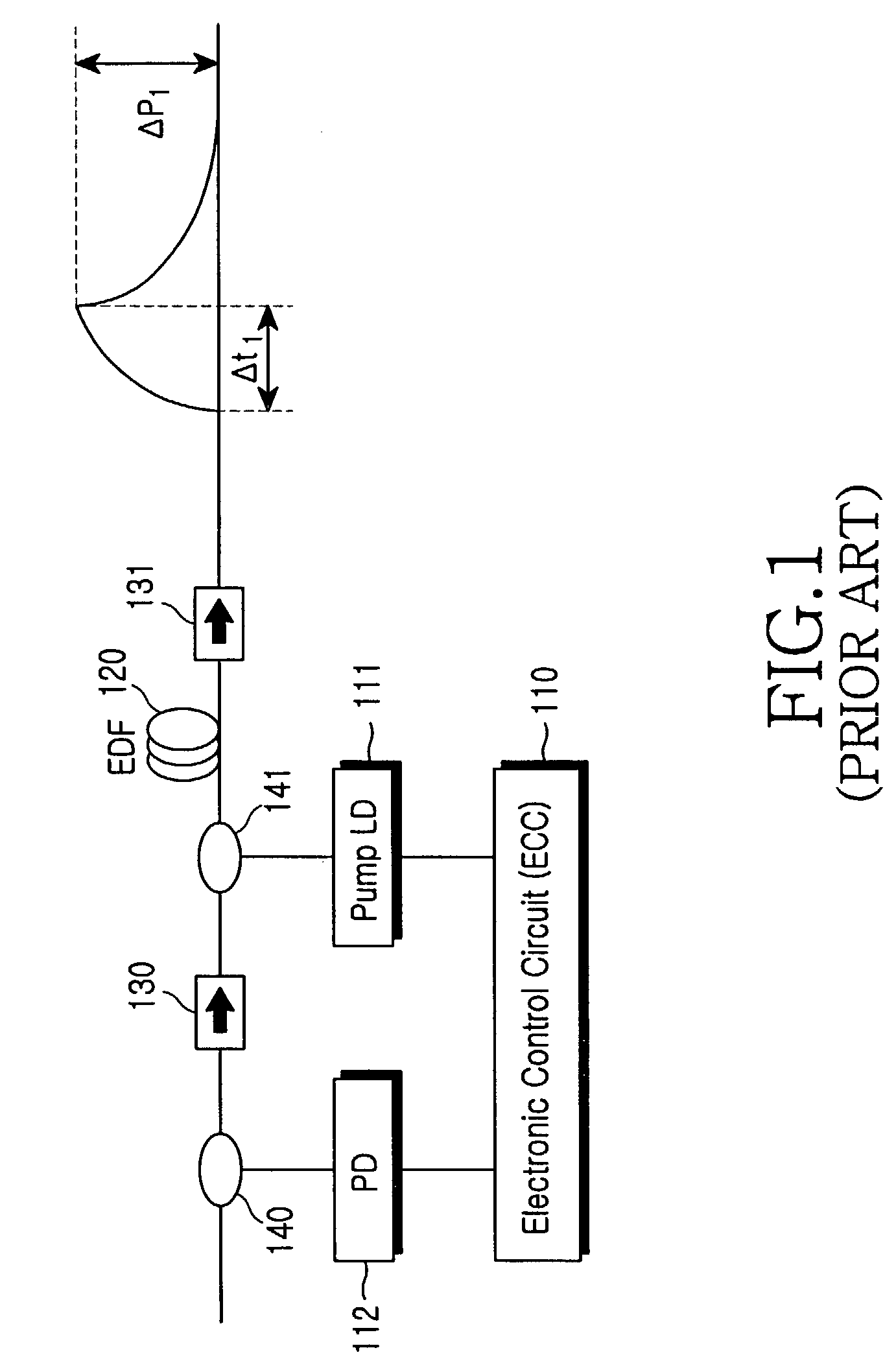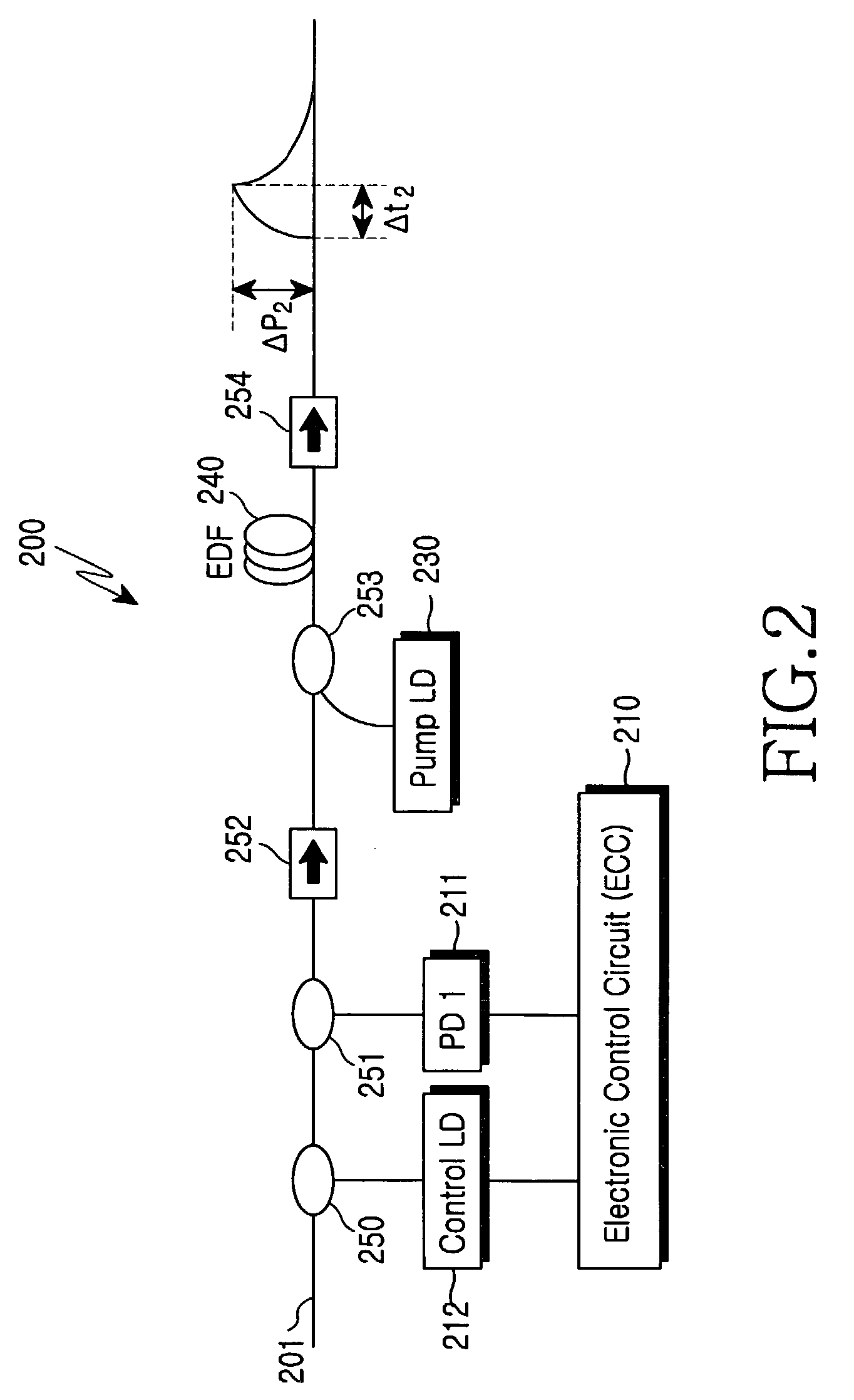Long-wavelength optical fiber amplifier
a long-wavelength, optical fiber technology, applied in the direction of optics, optical elements, instruments, etc., can solve the problems of difficult tuning of the operating parameters, complex configuration of the erbium-doped fiber amplifier, noise figure and gain-flattening, etc., to reduce the momentary gain-output variation, short control time, and quick response speed
- Summary
- Abstract
- Description
- Claims
- Application Information
AI Technical Summary
Benefits of technology
Problems solved by technology
Method used
Image
Examples
first embodiment
[0024]Referring to FIG. 2, in accordance with a first embodiment, a long-wavelength optical fiber amplifier 200 for amplifying a long wavelength-band input optical signal 201 includes a first pumping light source 230, a photo detector 211, an erbium-doped optical fiber 240, a second pumping light source 212, a controller 210, first and second wavelength-selective couplers 250 and 253, a beam splitter 251, and first and second isolators 252 and 254. The first pumping light source 230 generates and outputs a first pumping light of 980 nm. The photo detector 211 detects the optical intensity of the input optical signal 201. The controller 210 calculates the amount of optical-intensity loss and the number of channels of the input optical signal 201, and provides an output control signal based on the calculated result.
[0025]The input optical signal 201 travels from left to right in FIG. 2. A light traveling in the same direction as the traveling direction of the input optical signal 201 ...
second embodiment
[0035]Referring to FIG. 3, a long-wavelength optical fiber amplifier 400 according to the present invention is shown. The amplifier 400 includes first and second wavelength-selective couplers 420 and 421, first and second isolators 440 and 441, a first pumping light source 450, an erbium-doped optical fiber amplifier 430, a second pumping light source 412, a photo detector 411, and a controller 410.
[0036]A beam splitter 422 is located at the upstream side of the second isolator 440. The photo detector 411 functions to detect the intensity of an amplified optical signal output from the long wavelength optical fiber amplifier 400.
[0037]The controller 410 calculates the number of channels and the amount of optical signal loss, based on the intensity of the optical signal detected by the photo detector 411, and provides an output control signal for compensating the amount of loss of the output optical signal to the second pumping light source 412.
third embodiment
[0038]Referring to FIG. 4, a long-wavelength optical fiber amplifier 500 according to the present invention is shown. The amplifier 500 includes a beam splitter 520, a first wavelength-selective coupler 521, first and second isolators 540 and 541, a first pumping light source 550, an erbium-doped optical fiber 530, a second pumping light source 512, a second wavelength-selective coupler 522, and a controller 510. The first and second isolators 540 and 541 block a backward-traveling light that travels opposite to the traveling direction of an input optical signal 501. The erbium-doped optical fiber 530 outputs an induced-emission light in the long wavelength band. The controller 510 controls the output of the second pumping light source 512. The beam splitter 520 is located at the upstream side of the first isolator 540, splits off part of the input optical signal, and provides the split signal part to the photo detector 511.
[0039]The first wavelength-selective coupler 521 is located...
PUM
 Login to View More
Login to View More Abstract
Description
Claims
Application Information
 Login to View More
Login to View More - R&D
- Intellectual Property
- Life Sciences
- Materials
- Tech Scout
- Unparalleled Data Quality
- Higher Quality Content
- 60% Fewer Hallucinations
Browse by: Latest US Patents, China's latest patents, Technical Efficacy Thesaurus, Application Domain, Technology Topic, Popular Technical Reports.
© 2025 PatSnap. All rights reserved.Legal|Privacy policy|Modern Slavery Act Transparency Statement|Sitemap|About US| Contact US: help@patsnap.com



